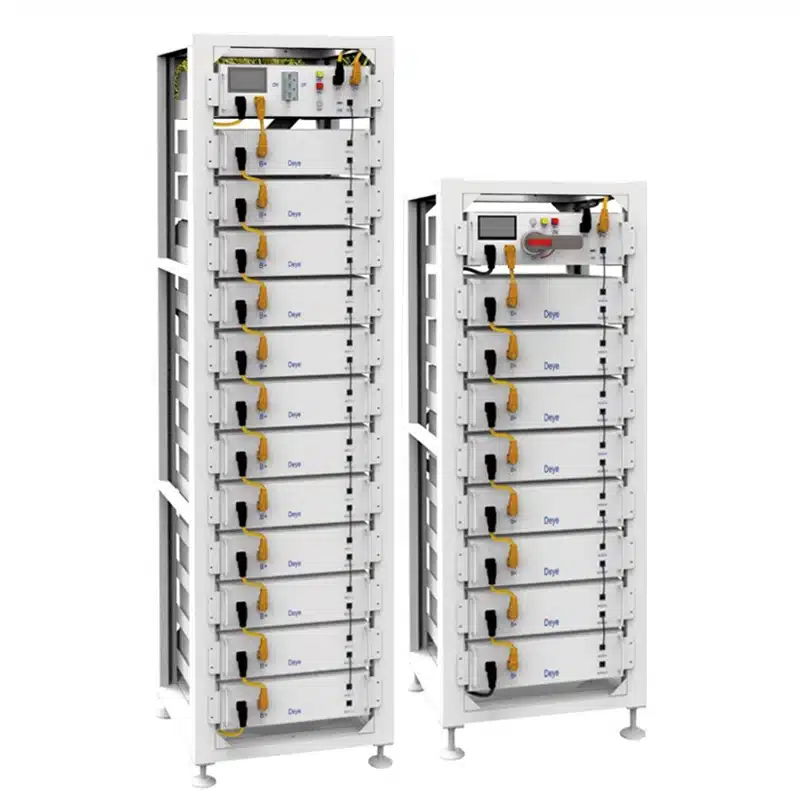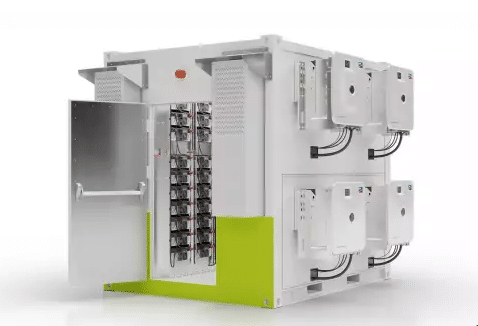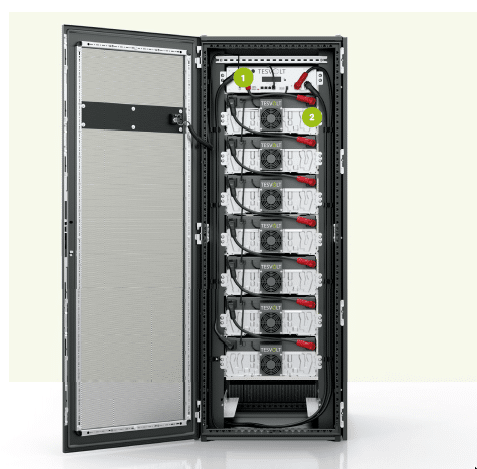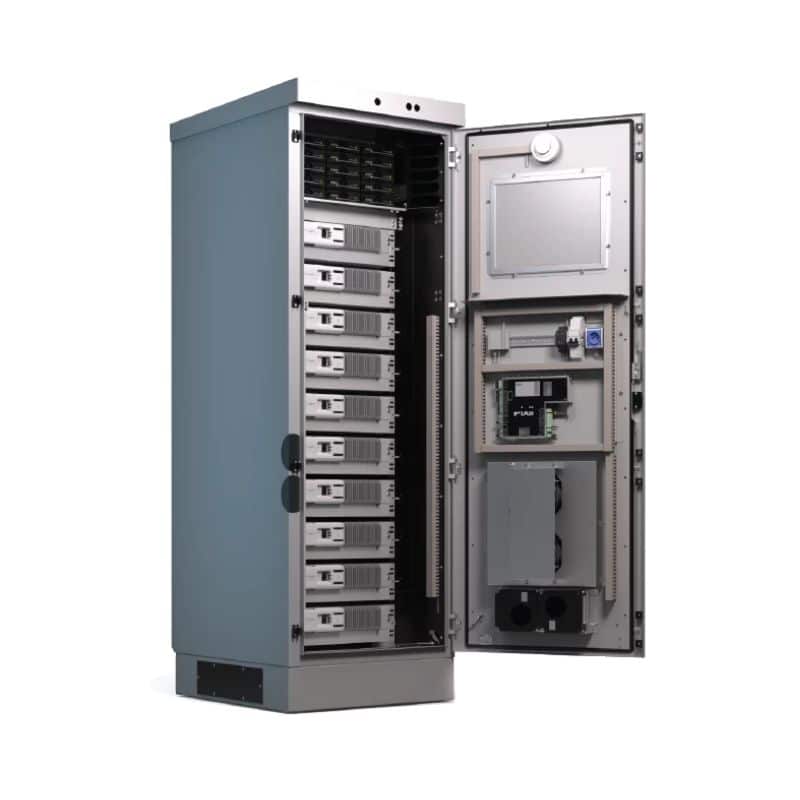BESS tertiary battery, what is it?
A tertiary battery system (BESS for “Battery Energy Storage System”), in other words a battery system for businesses, captures energy from renewable sources (photovoltaic for example) and stores it in rechargeable lithium-type batteries, to further use. It is generally available in high capacities, ranging from 100 kWh to several MWh.
A business battery system will therefore include a storage system (batteries), but also DC/AC conversion (hybrid inverter) capable of discharging the batteries to consumers depending on power demands. Conversely, the hybrid inverter is also a bi-directional charger capable of using the network (arbitrage for example) OR ENR (photovoltaic) energy sources, to recharge the batteries.
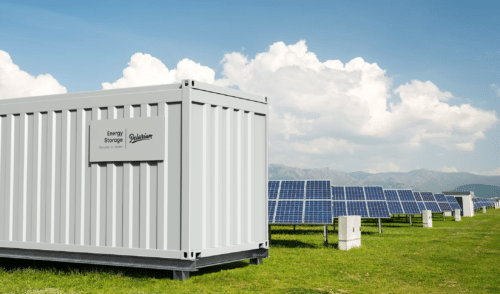
The increase in renewable energy sources and the desire to achieve zero carbon footprint make BESS an essential technology for businesses, commerce and industries. By adopting a BESS, you smooth your energy consumption, fix your energy costs over 20 years and limit the impact of future electricity increases.
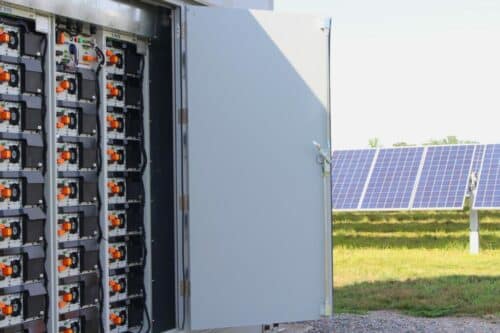
How does a business battery system (BESS) work?
A BESS “tertiary” battery system for the commercial and industrial (C&I) sectors operates similarly to a residential energy storage system, but on a larger scale to meet the higher energy demands of commercial and industrial facilities. industrial.
The system can be charged with electricity generated from renewable sources like solar panels or wind turbines, or from the grid during off-peak hours, with a battery management system (BMS) or charge controller ensuring safety and efficiency. Charged batteries store electrical energy as chemical energy, then the inverter converts the direct current (DC) electricity stored in the batteries into alternating current (AC) electricity to power the equipment and appliances of the facility. A C&I energy storage system often includes advanced monitoring and control features that allow facility managers to track energy generation, storage and consumption, helping to optimize energy usage and reduce costs. Facilities with energy storage systems can also interact with the grid, participating in demand response programs, providing services to the grid, and exporting excess renewable energy to the grid.
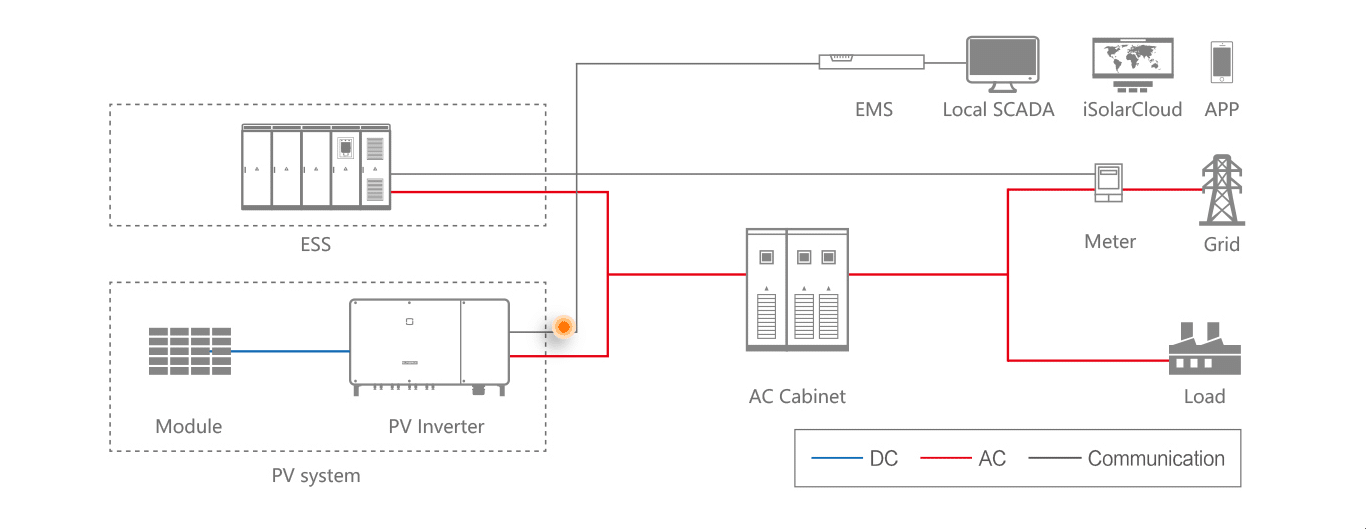
By managing energy consumption, providing backup power, and supporting the integration of renewable energy, C&I energy storage systems help businesses improve energy efficiency, reduce costs, and strengthen their efforts. in terms of sustainability.
How does a BESS battery system optimize the use of solar energy?
Installed in conjunction with solar photovoltaic (PV) panels, BESS can store excess energy from power generation during peak production periods, such as in the middle of the day when the sun is shining, and release it for use during periods of low energy production. In this way, solar energy is not wasted, but used entirely.
A BESS installed behind the electricity meter allows the consumer to use their own solar energy stored in the battery when market electricity prices are high, avoiding periods of high demand. Without the battery storage system, excess solar energy would have been wasted or sold to the power grid for less than the purchase price.
A BESS installed “in front of the meter” provides energy producers with a profitable and sustainable method of producing renewable energy and optimized prices for their energy.
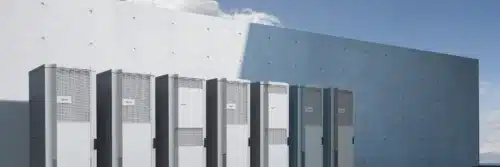
Energy storage systems (ESS) are not a new technology. Traditional ESSs such as pumped storage hydropower, compressed air storage, flywheel energy storage, thermal energy storage and gravity mechanical energy storage have long been used . However, battery energy storage systems (BESS) have become a now mature and affordable technology, largely due to the reduction in prices of lithium-ion batteries.
What are the methods of managing photovoltaic energy with batteries for businesses?
Increase in self-consumption:
Excess photovoltaic energy (photovoltaic energy not consumed by loads) is stored in batteries. When photovoltaic power is insufficient or no photovoltaic power is produced at night, the batteries discharge to power the loads, which improves the self-consumption rate and reduces the electricity costs of buildings:
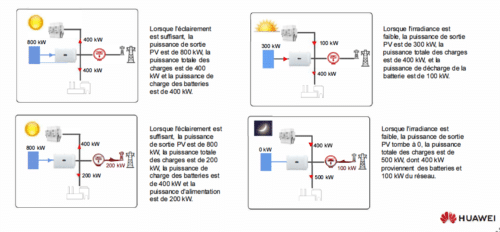
Clearing power peaks (“peak shaving”):
Electricity costs for tertiary and industrial buildings (C4 subscription and above) include the basic costs, the costs based on the MWh consumed, and the costs adjusted for the power factor. The base charge is charged based on the maximum demand specified in the contract, the capacity of the transformer or the actual maximum demand. Power factor adjusted charges are billed based on the local power company's power factor rating criteria. The maximum demand in the contract can be active power or apparent power.
For example, a base fee is charged to large industrial customers with transformer capacity greater than 315 kVA. The maximum demand capacity in the contract is calculated based on the active power. That is, the maximum demand capacity corresponds to the highest 15-minute average active power during a charging period, which is one month. If the actual capacity (average of active power values measured once per minute) exceeds the demand capacity, additional costs will be charged to the customer.
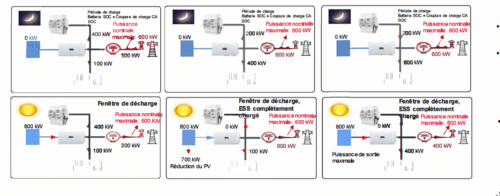
-
DEYE BOS-G battery
4.980,00€ - 18.425,00€

